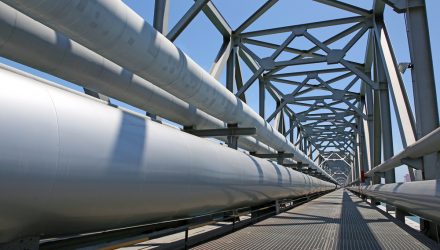Soaring energy costs heading into winter have brought the importance of the energy infrastructure sector into sharp focus. But how should investors evaluate the investibility of companies in this sector?
Indexing and marketing intelligence firm Alerian has put together a list of key criteria investors can use to evaluate companies working within the energy infrastructure sector.
Management Matters
One of the very first considerations when digging into an energy infrastructure company is to look at how the management team has led the company. Investors should look for companies whose management teams have shown track records in growth, building new projects in a timely manner while remaining on budget, and utilizing investor capital in meaningful and efficient ways.
A good management team will have a deep pool of talent that it draws from that not only works well with each other but also with investors, customers, and shareholders. A good management team is also trustworthy and can be counted on to follow through on their commitments.
Assess The Asset Footprint
A second consideration when evaluating a company is to consider its asset footprint. Midstream companies that have already established land rights and right of way in the direction that growth is headed would be able to expand much more easily than companies that are starting from scratch. A company that is just establishing rights faces regulatory and political hurdles that an already-established company does not.
Companies that have also diversified within the energy value chain can usually benefit from cost savings and from having natural hedges for themselves, such as companies that have basin diversity having a hedge built in against hydrocarbon flow changes.
Can They Get Capital?
As companies seek to expand, the depth of their capital markets access becomes vitally important. Acquisitions and expansion must utilize capital that costs less than the return on the asset; larger companies often find it easier to obtain capital at cheaper prices because they have a bigger footprint, lower business risk, and a greater margin of error available to them.
Midstream companies that also have investment-grade credit ratings or can access other sources of capital, such as dividend reinvestment plans (DRIPs) or private investment in public equities (PIPEs), would have easier access to the capital at the prices they are seeking.
Look For A Company That Can Grow
The number of projects a company has in the pipeline is important for their growth opportunity. Companies that are generating their own organic growth typically provide greater internal rate of return (RRI) over companies that grow via acquisitions. A company that has a number of projects planned has greater potential for growth and the ability to expand their asset footprint in the long term.
Don’t Forget Financials
As with investing in any company, the financial metrics matter. With energy infrastructure companies, it’s important to look at the leverage and payout ratios; being on the lower end of either of these equates to bigger margins of error for the company and higher execution risk. It also leaves a company much more vulnerable to errors with macroeconomic issues like fluctuations in commodity prices and severe weather events.
Size Can Be An Advantage
As seen in some of the other components, within the energy infrastructure industry, size definitely can make a difference. The bigger midstream companies tend to enjoy more trading liquidity and greater investor exposure than their smaller counterparts. This is in part because of their capital market access, which in turn can help them secure investment-grade ratings, as well as greater asset footprints that can give them a leg-up on the competition. The flipside of being a larger company within this particular industry is that it requires larger projects in order to affect the bottom line, whether built or acquired.
“For investors willing to do the work of researching individual securities and comfortable with single security risk, direct investment in individual energy infrastructure companies may be an attractive option,” Alerian writes on the subject.
For investors not comfortable shouldering single stock risk, however, an ETF or ETN might be a better option. You can view a full list of energy infrastructure ETFs and ETPs on ETF Database.
For more news, information, and strategy, visit the Energy Infrastructure Channel.

